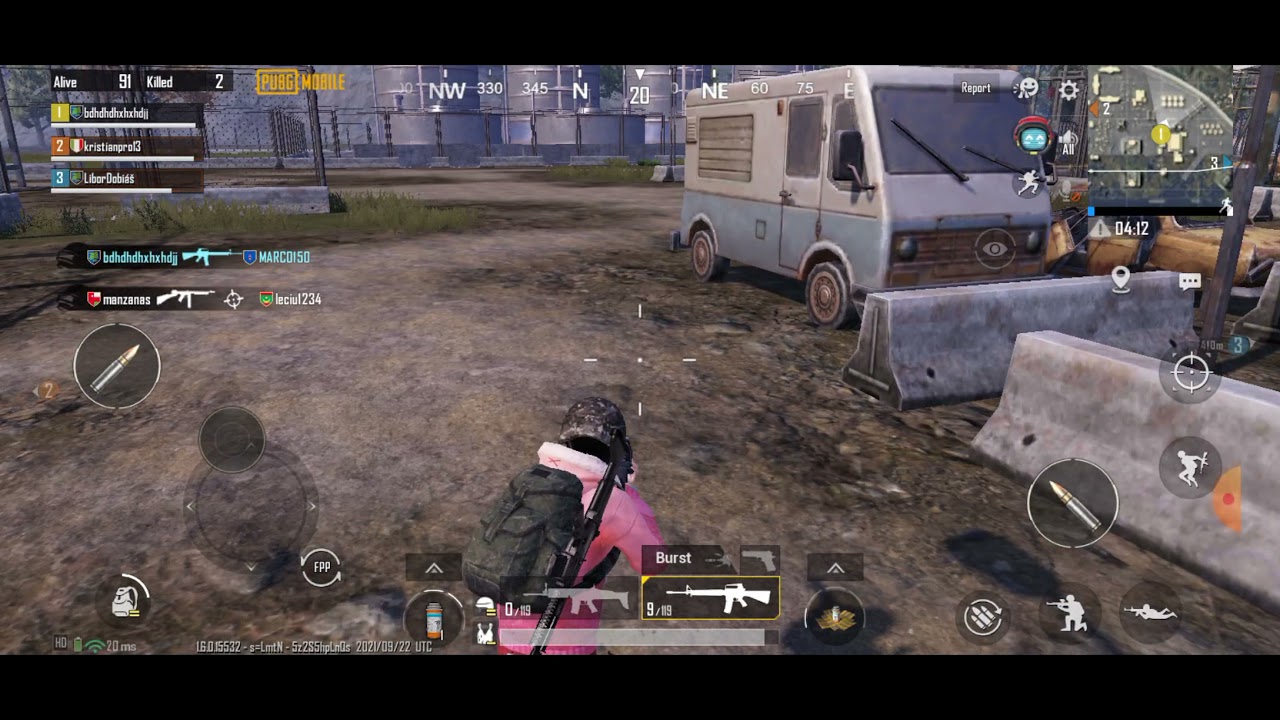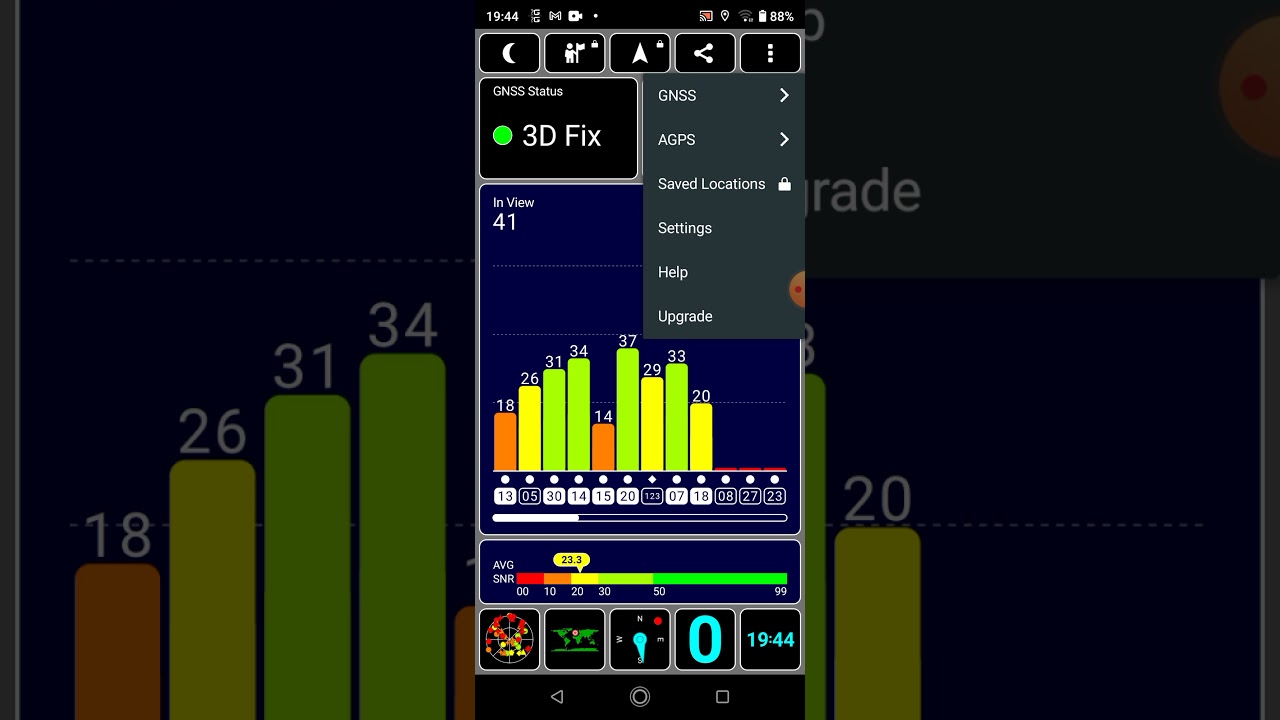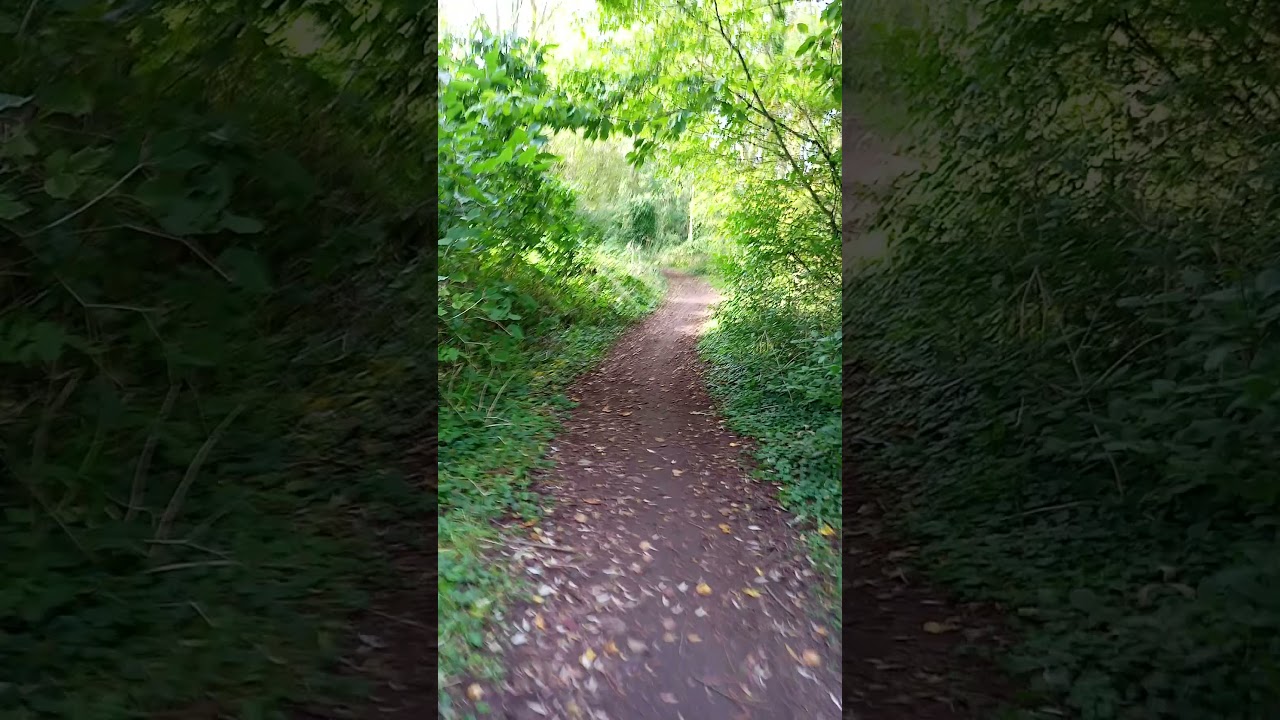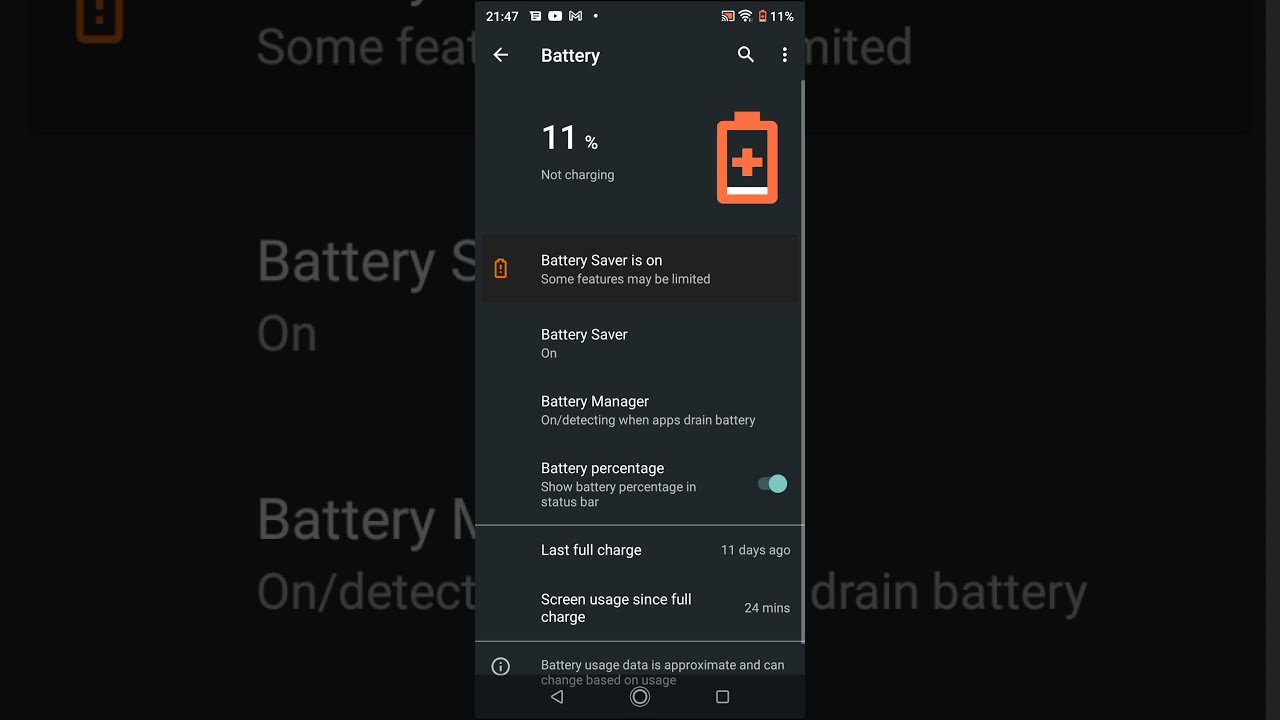Smartphones
Umidigi Bison Pro : test / review
Published on: 24-09-2021 / Modified: 07-10-2022
I have been following the Umidigi brand for a few years and this Umidigi Bison Pro is the 6th phone from this brand that I have tested. Umidigi has evolved a lot in 2 years and today offers models that represent credible alternatives to better known brands. I tested the Umidigi Bison (without the "pro") in 2020 and got a lot of positive feedback after testing it, it was the first rugged phone that had a mainstream design there while this kind of phone is usually quite unattractive. Umidigi returns with a new version of their Bison by declining a pro version which differs on quite a few elements from the basic version.
The Umidigi Bison Pro is a bit more powerful than the previous version, the level of finish has improved a little further but from a purely technical point of view both phones are very similar. With the first Bison, Umidigi had made the universe of the rugged smartphone more accessible, this is even more the case with the Bison Pro because this phone is really close to a classic smartphone with just a few additional protections. I even wonder if we can consider that the Umidigi Bison Pro is a real rugged smartphone.
If you regularly break your phones by mistake or accident, the Umidigi Bison Pro could represent a more solid alternative without having to carry a brick in your pocket.
Manufacturer web site:
https://www.umidigi.com
Site where I have bought the Umidigi Bison Pro: https://www.umidigi.com
Structure of my tests
I test the phones according to a pre-established structure (see below) to provide you with as much information as possible. Unfortunately, this takes a long time. Some tests like network performance tests take several days and for photo tests I sometimes have to wait until the weather is suitable to take pictures in good conditions. I am therefore obliged to publish the tests step by step, so I invite you to come back if the test is not complete at the time of your visit.Price Umidigi Bison Pro
The list below shows the prices for the Umidigi Bison Pro from more than 50 sites around the world. If you are not satisfied with any price, you can subscribe to a price alert to be the first to be notified when the price drops.The above links are affiliate links from companies such as Amazon, Gearbest, Aliexpress,... If you appreciate my work, I would be grateful if you could purchase these products through these links. It costs you absolutely nothing but I get a small commission that allows me to buy the material I test. Thank you very much!
Timeline
September 22, 2021 delivery of the Umidigi Bison Pro from China (by the manufacturer). Start of the test.Why this phone?
I test most Chinese smartphones of well-known brands but sometimes I go a few deviations to test alternative brands like Doogee, Oukitel or Umidigi. I made some great discoveries while testing these smartphones, but it was with Umidigi that I saw the biggest progress. Umidigi has found its audience with a fairly aggressive price positioning and over time they have managed to market better quality phones without affecting the selling price too much.The Umidigi Bison Pro is at the crossroads of two worlds with on one side consumer smartphones which must also please the eyes and on the other side rugged smartphones with their rudimentary design and their excessive weight. I see this model as an attempt to make the world of rugged smartphones more accessible to the general public without having to compromise too much. The Umidigi Bison GT is heavy (265gr) but it is clearly not the heaviest in this category. Its screen is protected by a thick border but here too Umidigi has managed to keep a large screen with a diagonal of 6.3 inches with a resolution of 1080x2400px. Umidigi has always been generous in battery capacity and storage space, this model is no exception to the rule with a 5000mAh battery and 128Gb storage capacity.
All the conditions are therefore met to succeed in the bet of selling robust smartphones to a larger public.
Unpacking
The packaging is fairly standard, the box contains the phone, a small manual, a charger and a USB cable.
First configuration
Not yet available / testedFinish
Specifications
The information below comes from the Device Info HW application. The application provides detailed technical information about the tested phone. The Umidigi Bison Pro runs on a Mediatek architecture (CPU, GPU, GPS, etc.) like the previous model, but this is a slightly more powerful model. The screenshots below will allow you to see the detailed features of the phone. Most of the dials outside of the Mediatek architecture are unique to this phone, I haven't seen them on other phones. The phone has a barometer, gyroscope and magnetometer, it runs on Android 11 and its screen has a frequency of 60 hz.
The Umidigi Bison Pro is also equipped with an infrared thermometer to measure the temperature of objects or the temperature of your forehead. The measured temperature gives you an indication of the temperature but you should not take this temperature as a scientific measurement because there is always a small difference with reality.
CPU / GPU Performance
As I indicated in the previous paragraph, this phone runs on a Mediatek architecture with a Helio G80 CPU that is also found on a number of other entry-level smartphones such as the Samsung Galaxy A22, the Huawei Y9a or the Realme 6i. For the graphics part, it is based on a Mali G52 that is also found in many entry-level phones such as the Honor 9x or the Redmi Note 9.
The Umidigi Bison Pro is therefore an entry-level smartphone, it is not the phone to buy to meet a need for performance but it will offer sufficient performance for normal use.
Benchmark Antutu/3DMark
I obtained a score of 179,409 points with Antutu, it is quite low compared to the selling price of the phone but a priori the target audience for this kind of phone is not looking for raw performance.Gaming
To test the performance in game, I download the mobile PUBG game and evaluate the in-game experience, graphics level and depth of vision. This game is quite demanding and should help you evaluating the performance of a phone.

Network performance
The Umidigi Bison Pro is compatible with more than twenty 4G frequencies, so it will be compatible with all frequencies in Europe and many frequencies used on other continents.Signal 4G (before december 2020)
The ability to pick up the network correctly is an essential element for a phone but it is only very rarely measured. To measure a phone's ability to pick up the network, I perform a large number of measurements on the same cells to be able to compare phones under similar conditions. The signal is measured in dBm, a value of -90dBm indicates a worse signal than -70dBm. These measurements are therefore taken under real conditions and not in a laboratory, they are not scientific but give a good indication of performance.
Signal 4G (from December 2020)
I decided to change the methodology for measuring the network because I noticed that the configuration of the mobile network changes over time. This makes it more difficult to compare phones because the conditions are no longer exactly the same.
To overcome this problem, I set up a device that captures 24 hours a day about ten parameters from the mobile network (ex: cell id, rssi, rsrq, snr, frequency,...). I then place the phone next to the device for 24 to 48 hours taking the same measurements so that I can compare them.
Overview of the phones tested with this methodology
I took a little over 900 measurements to assess the network sensitivity of this phone and unfortunately this performance is not very good. Umidigi had nevertheless made good progress in terms of network sensitivity, I can see here a step backwards. I got an average of -104.98 dBm with the phone, it's not good score compared to other phones but if I compare it to my probe the difference is even bigger. I have an average difference of 10 dBm between the measurements of my probe and the Umidigi, it is too much.
This phone may work very well if you have good 4G network coverage but if you live in a place where this coverage is not good, you will see quality degradation more quickly than with most of the other phones in my ranking.
Download/Upload speed
To test the download speed, I have identified some 4G cells offering good performance where I test all my devices several times to see what download and upload speed they can achieve.
Wifi performance
To test a phone's ability to receive the network properly, I take measurements near my router and then remotely (and always at the same place). This gives me an average in dBm where a value of -90 dBm indicates poorer performance than a value at -30 dBm.Wifi signal
I measured a signal of -25db near my router and -75db at a distance, these are fairly average values, so this phone will not be a benchmark in terms of wifi signal but it is not bad either.
Download/Upload speed
To test the speed in Wifi, I connect to my router in 2.4Ghz and 5Ghz (if available) and use the Ookla application to measure the speed.
GPS performance
To test the quality of the GPS signal I use the Offline Maps application and I make the same train trip in pedestrian mode. Why? In pedestrian mode, the GPS does not artificially correct the signal to stick to the road, it has no markings, so you can see the actual position. I then use an application to measure the accuracy of the signal.

Battery range
The Umidigi Bison Pro is equipped with a 5000 mAh battery which should give you a comfortable autonomy, this is partially true. I got a battery life of 610 minutes with the screen on at 100% and a battery life of 1632 minutes with the screen on at 50%. The screen therefore does not have a linear consumption because at 100% it consumes 2.6 times more energy than at 50%. The energy efficiency is therefore not extraordinary but thanks to its 5000 mAh, the battery should allow you to last 2 days if the screen is not at 100% of its brightness.Photo camera test
To test the quality of photos produced by a phone, I do a technical test (resolution, sharpness, chromatic aberration,...) in studio (identical conditions) to evaluate the technical part objectively. From the second half of 2020, I built my own laboratory to take completely objective technical measurements. I then take pictures in real conditions to see how the camera performs. I then evaluate these photos according to my criteria but I publish the photos so that you can evaluate the result according to your criteria.Hardware
Umidigi is used to using good photo sensors, but they also tend not to use them well. Umidigi often uses good Sony sensors but I have seen a problem with the colors on almost all of their phones. The Umidigi Bison Pro also comes equipped with a Sony sensor, so I'm curious to see if they've finally managed to get rid of this color problem.This is not common but this model does not include an ultra wide angle sensor, it is not a big loss because these sensors do not generally produce very beautiful photos.
Default app
The default photo app used by Umidigi is arguably the closest thing to a standard Android experience. The application goes straight to the point, there aren't many options and that's okay, a phone should be kept simple, especially if it's an entry-level phone.
Photo quality
Photo test / studio
Technical test / Lab
I have not yet had the time to develop a tool to display the results of my technical tests , so I'll just post an understandable review. This test evaluates the purely technical quality of the photo sensor.
Sharpness score: medium
Sharpness degradation: 8% (between center and periphery)
Chromatic aberration: weak at the center, weak at the periphery
Dynamic range: average
Colorimetric difference: important
I haven't tested many phones yet in my new studio but for this Umidigi, I would summarize the result as follows:
- sharpness is correct without being exceptional
- sharpness does not diminish too strongly at the periphery
- no chromatic aberration
- ability to capture bright areas and dark in the average
- significant difference in color reproduction, here I suspect that this will be seen for photos taken in daylight.
Photo test / sunny
The photos taken outside confirm the technical verdict that I had made before taking these photos. The sharpness of the image is quite average, if you zoom the photos to 100% you will notice that the foliage is not very precise. This problem is not seen if you are viewing your photos on a phone screen or a computer screen of 25 inches or less. The colors tend too much towards red / brown, the colors are slightly too warm. The exposure level is almost fair but the dynamic range is not very wide which makes the sky completely white if it does not occupy more than half of the photo. If I give the sky more space, it's the vegetation that goes underexposure. That's a pretty common finding for phones of this type and this price range, the Umidigi Bison Pro isn't a photo champion, nor can I say it's bad.
Photo test / cloudy
Not yet available / tested
Test photo / night
Not yet available / tested
Video quality
Stabilisation

Video normale conditions

Video low light
Not yet available / tested
Audio quality
To test the quality of the phone's audio output, I connect the device's audio output to a measuring tool, then play sounds on all frequencies and measure the differences between the original sound and the sound produced by the phone. In this way I measure the phone's ability to correctly reproduce all sounds.Frequency Response
This test is intended to test the device's ability to correctly reproduce all frequencies. The white line in the middle of the graph is the ideal situation and the other colors come from tests on different phones. A deviation from the reference line indicates a deviation from the ideal situation. To see good sound at all frequencies, it is therefore necessary to get as close as possible to the reference line.
Dynamic Range
This test is designed to test a phone's ability to play sounds at different volume levels. Here too, the phones must be as close as possible to the reference.
Noise Level
This test aims to identify if the device under test is able to reproduce sounds without too much noise. A high score indicates a low parasite rate, a lower score indicates a higher presence of parasites.
Screen quality
To test the screen, I use a colorimetric probe that measures the color accuracy of a screen, as well as other parameters to see if a screen is able to correctly reproduce an image. I also test the brightness level to determine if the screen will be able to display an image in full sunlight.Colorimetry
Brightness / Contrast
Rugged phones are made to be used outdoors and as a rule the brightness produced by the screen is quite strong. I got a brightness of 275 cd / m² with the brightness at maximum and without adaptive brightness. It is really very little and very clearly insufficient to make the screen readable under the sun. I then activated the adaptive brightness and flooding the sensor with light and I got a brightness of 370 cd / m², it is already better but it is still insufficient. Ideally, more than 500 cd / m² would be needed for good readability in direct sunlight.
I got a contrast of 1256: 1, it's a normal contrast for this type of screen so no problem there.
Biometry
Umidigi made a very curious choice for the placement of their fingerprint sensor, this sensor is located on the left of the phone! You must therefore pass your hand behind the phone and hope to have a finger long enough to cover the fingerprint sensor. I have big hands so I didn't really have any issues but it is an inconvenient position to unlock the phone.Operating system
The Umidigi Bison Pro runs on Android 11 without overlay. Umidigi stays true to the base version of Android, so there are no ads or unwanted apps. The parameters are quite numerous but quite well classified. The particularity of this model is to be able to personalize the buttons to assign them the function of your choice such as for example assigning the thermometer or the camera. Overall Android 11 runs great on this Umidigi, I didn't encounter any issues during testing.

Encoutered bugs
Not yet available / testedAccessories Umidigi Bison Pro
Compare Umidigi Bison Pro with the others
Test / Review conclusion
I still have to publish the night photos but the result of this test will not change the conclusion. With the Bison range, Umidigi has managed to make the rugged smartphone more accessible and I am not talking here about the price but also the exterior aspect. Rugged smartphones are generally quite ugly and very angular, the Umidigi Bison and its pro version have a much less harsh exterior appearance. Where this kind of phone is aimed at a more professional audience, the Bison Pro may well tempt a more traditional audience who tend to drop their phone.
For less than 160 € (November 2021), the Umidigi Bison Pro has slipped into the entry-level segment with a fairly interesting phone. Rugged phones generally cost more and sacrifice a lot in many ways. This is not necessarily the case with this phone. The Umidigi Bison Pro isn't a performance bully but at this price point it's often the same with other phones so I can't fault it. This phone will therefore target a more general audience who is not looking for performance or photo quality. The master of this segment remains for me the Redmi Note 10 but it does not offer waterproofing and is not protected against shocks.
The Umidigi Bison offers good battery life, good gps performance, decent sound quality (which is quite rare for this kind of phone) and an operating system without additions unwanted applications. It therefore has a more utilitarian vocation than a leisure-oriented phone like the Redmi Note 10.
The phone's biggest weakness is its sensitivity to the 4G network, it is a phone that will lose signal faster than average when network coverage is poorer. The screen has a visible color difference but since this phone is to be considered as a tool, this kind of problem should not prevent you from buying it. There is also the unknown when it comes to Umidigi's support, I haven't really encountered any big problems on Umidigi phones launched after 2020 but I regularly receive testimonials from customers disappointed with their phone because it presents a bug that appeared after an update. If you are in this case, I advise you to post a message on the official Umidigi forum as you will be able to expose your problem to the Umidigi community and support.
Strengths
GPS signal
Battery life
Durability / Water
4G frequency coverage
Weaknesses
4G network sensitivity below average
Screen
Performance
Alternatives to this product
Not yet available / tested
 LAURENT WILLEN
LAURENT WILLENHead of myself on this blog
I share my passions on my blog in my free time since 2006, I prefer that to watching nonsense on TV or on social networks. I work alone, I am undoubtedly one of the last survivors of the world of blogs and personal sites.
My speciality? Digital in all its forms. I have spent the last 25 years working for multinationals where I managed digital teams and generated revenues of over €500 million per year. I have expertise in telecoms, media, aviation, travel and tourism.










































Questions/Comments